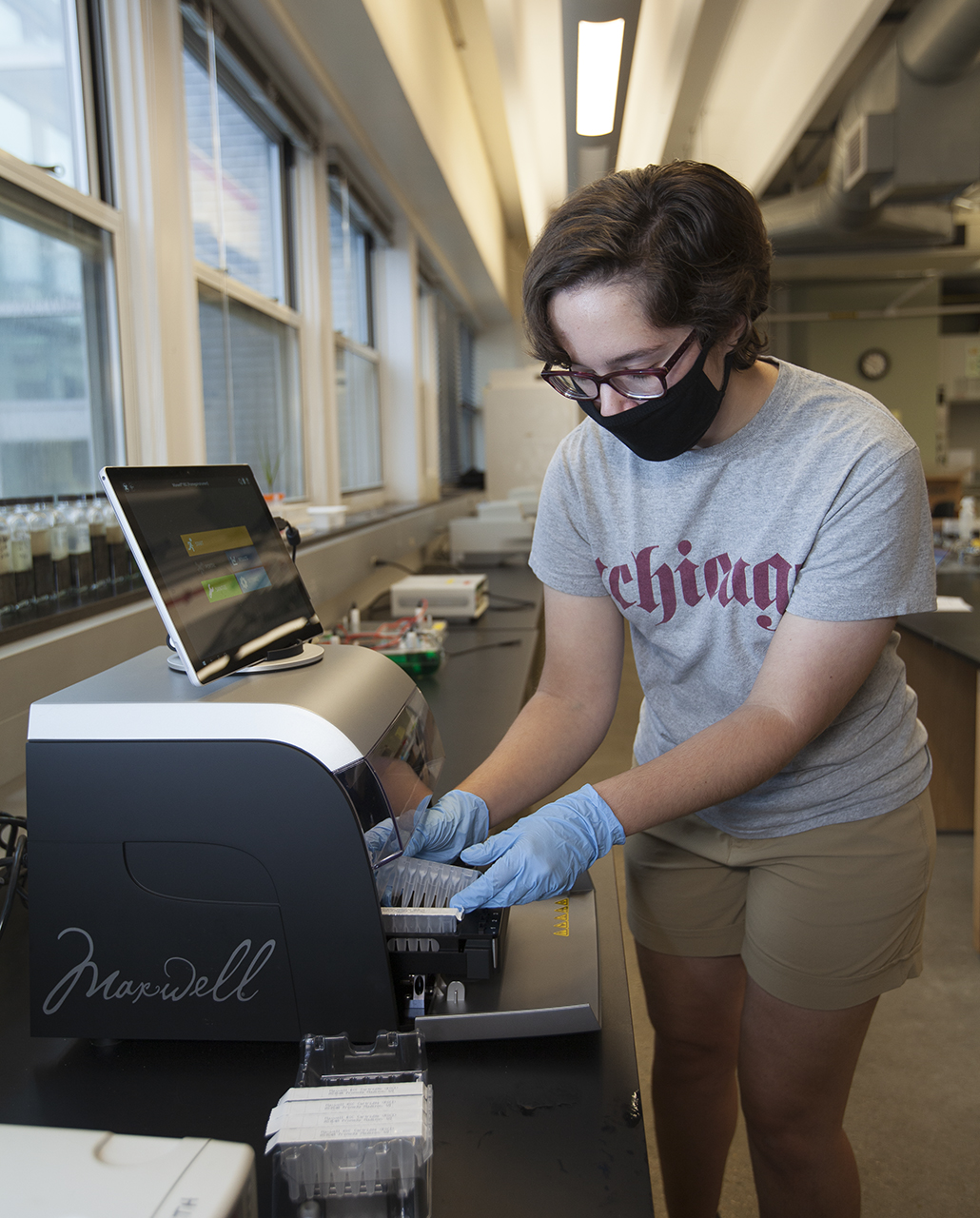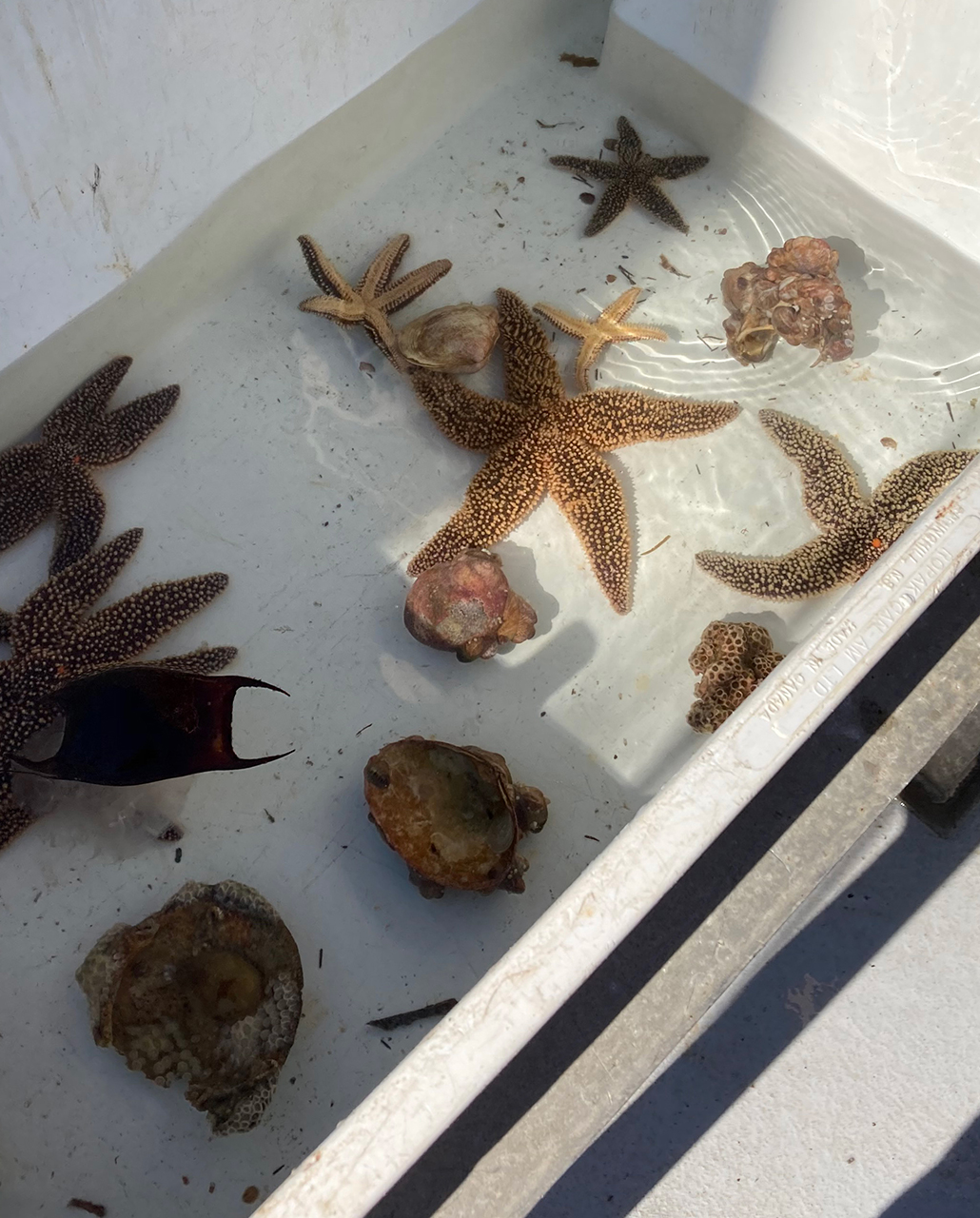Launching the UChicago Autumn Quarter at MBL – Pandemic Style

If you’ve ever stayed in the MBL’s Swope Center, you may not recognize the accommodations that greeted 12 University of Chicago students who arrived last month for the first-ever “Autumn Quarter at MBL.”
Each undergraduate’s home for eight weeks is a relatively luxurious, social-distancing spread: a double room with a single bed and a desk set, comfy armchair, refrigerator and microwave, and private bathroom. The students went into quarantine pending results of their first COVID-19 test, during which time customized meals were delivered to their rooms. And along with a bag of MBL swag, the students enrolled in “Imaging for Biological Research” found an interesting box on their Swope room desks: a kit with the parts to build a simple microscope, and two prepared samples for imaging.
“We had our first lab in our rooms, while we were in quarantine. It was great, though it was difficult to build the microscope over Zoom. A lot of times one of us would say, ‘Wait, wait! I put the wrong lens on!’” says Miranda McKibbin, a UChicago biology major. “It was a little sad because we couldn’t go outside and get samples of organisms to look at. But then a few days later, we could!”
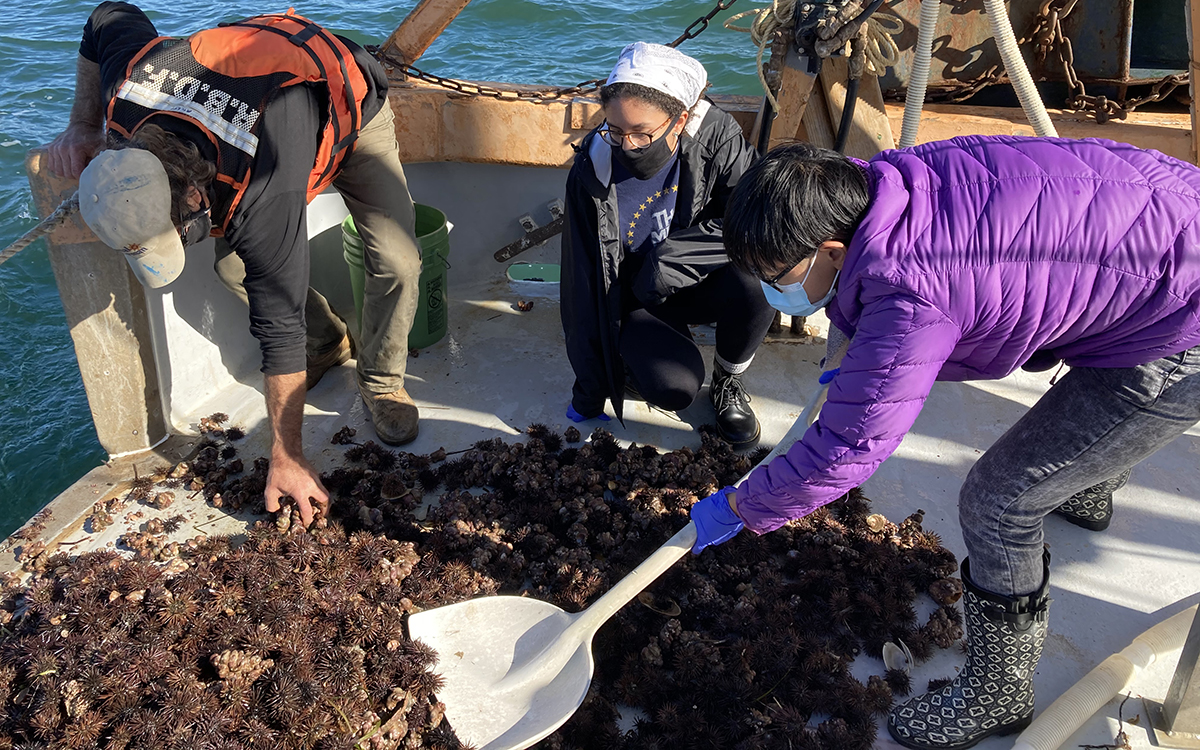 Sorting through sea urchins and other marine organisms brought up by Gemma’s trawl. L-R, MBL Collector Bill Grossman and UChicago Autumn Quarter students Hannah Holmes and Kimberly ‘Charlie’ Wang. Credit: David Mark Welch
Sorting through sea urchins and other marine organisms brought up by Gemma’s trawl. L-R, MBL Collector Bill Grossman and UChicago Autumn Quarter students Hannah Holmes and Kimberly ‘Charlie’ Wang. Credit: David Mark WelchBringing the first student group back to the MBL since March, when COVID-19 emptied the campus, took an enormous, all-hands effort to comply with a new normal. “We had to rethink all of our processes, from A to Z,” says Kerri Mills, MBL’s housing and conferences manager. Every MBL department, from Facilities to Human Resources, was deeply involved. But it was a joy to pitch in, by all accounts.
“We missed having students here!” says MBL Director of Education Linda Hyman. “Holding this course was a way to help out the University of Chicago, which had to prioritize in-person classes for new students. It was also a proof-of-concept for MBL to hold a small course while respecting public health standards. The proof in the pudding will be next year, when we scale up to many more students. But this was also an opportunity to get students back on campus, which we frankly couldn’t wait to do! Hands-on research courses are what we do best.”
“I think we’re ready for anything, now that we’ve been through this process,” says Ann Egan, MBL’s director of human resources. “The whole campus was involved, and the students are thrilled to be here. It’s been an amazing experience.”
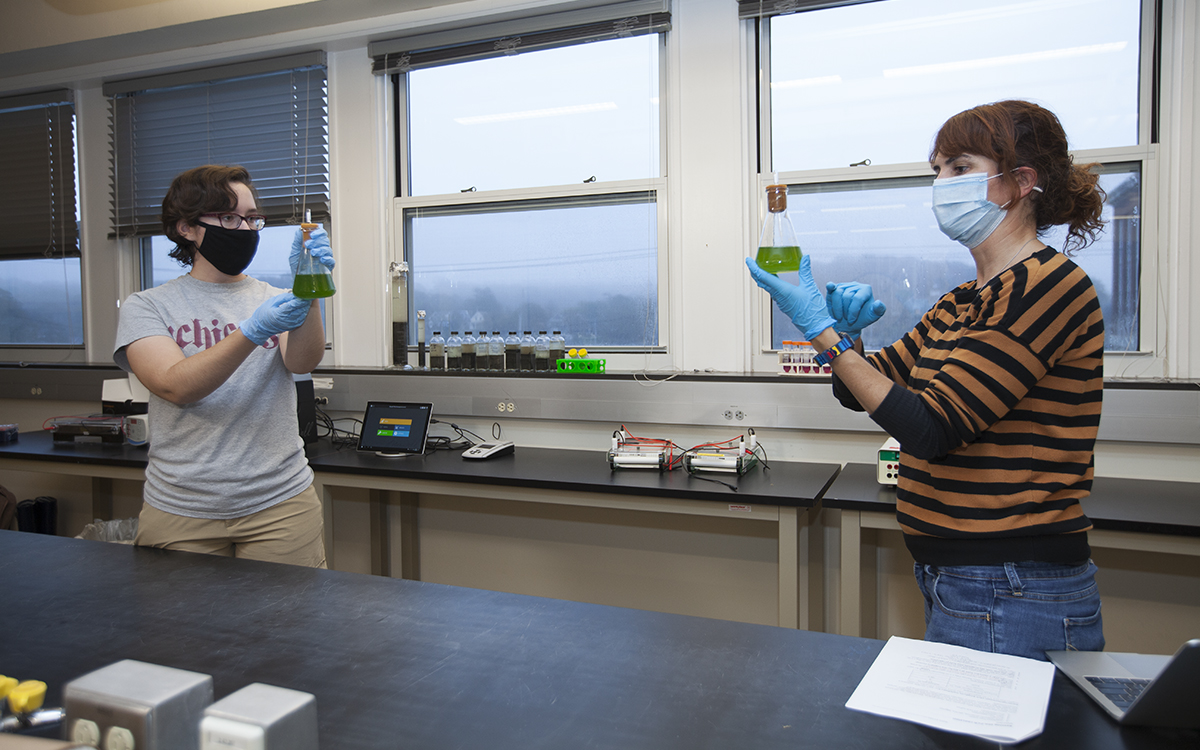 Autumn Quarter student Miranda McKibbin and MBL faculty member Elena L. Peredo holding cultures of desert-adapted green microalgae in the “Microbiomes Across Environments” course. Credit: Daniel Cojanu
Autumn Quarter student Miranda McKibbin and MBL faculty member Elena L. Peredo holding cultures of desert-adapted green microalgae in the “Microbiomes Across Environments” course. Credit: Daniel CojanuTeaching in Quarter Time
The “Autumn Quarter at MBL” is a mix of new and returning courses, but none are business as usual at MBL. Pandemic aside, the students are juggling not only one or two lab courses in Woods Hole, but also online UChicago courses, tutoring gigs, remote jobs and internships. (One student, Aster Taylor, is doing quantitative image analysis for MBL Senior Scientist Roger Hanlon, a continuation of their Metcalf fellowship last summer.)
To accommodate the students’ packed schedules, the faculty had to move away from the familiar MBL course structure of daily, intensive training. While spread over more weeks, though, the course immersion remains: Students attend lectures but spend most of the time in the field and lab, learning how to use high-end equipment and conduct real-world research.
On a recent afternoon in the “Microbiomes Across Environments” course, taught by MBL faculty David Mark Welch and Elena Peredo, nine students are buzzily engaged in lab activities, conversing through face masks and across 6-foot distances. They had been out on the MBL’s research vessel, the Gemma, where they collected sea urchins, starfish, and horseshoe crabs. Back in the lab, they used swabs to sample the microbiome from several organs of the animals, and talked about the research questions they might ask. Is the microbiome different between a male and female crab, and how? How do the mouth and anus microbiomes differ? How does the microbiome change after the animal has been in the lab for several days? “We are teaching them how microbial ecologists ask questions,” says Mark Welch.
“I was really excited about the field component of this course,” says Megan Garvery, a biology and visual arts major, “especially now when everything is online.” Miranda McKibbin agrees. “Interacting with the animals, doing the DNA swabs, was really unique. At another school, you might just get little tubes of samples. Here, you are a part of where the organisms actually came from.”
Today the students are purifying and amplifying short pieces of DNA from the microbial samples. These pieces will be sequenced in the MBL’s Bay Paul Center, and the students will get back computer files containing tens of thousands of unprocessed DNA sequences. They will then use bioinformatics to analyze the data, so they can answer the comparative questions they’ve chosen. After returning to Chicago for the Thanksgiving break, they will present their results in an online symposium.
“There’s been a real sea change in our understanding of what it means to be an organism,” Mark Welch says. “The microbiome is a critical part of an organism’s health and behavior, the way it develops, whether or not it can regenerate. All of the students, no matter what their major, will leave with that appreciation for the complexity of organisms.”
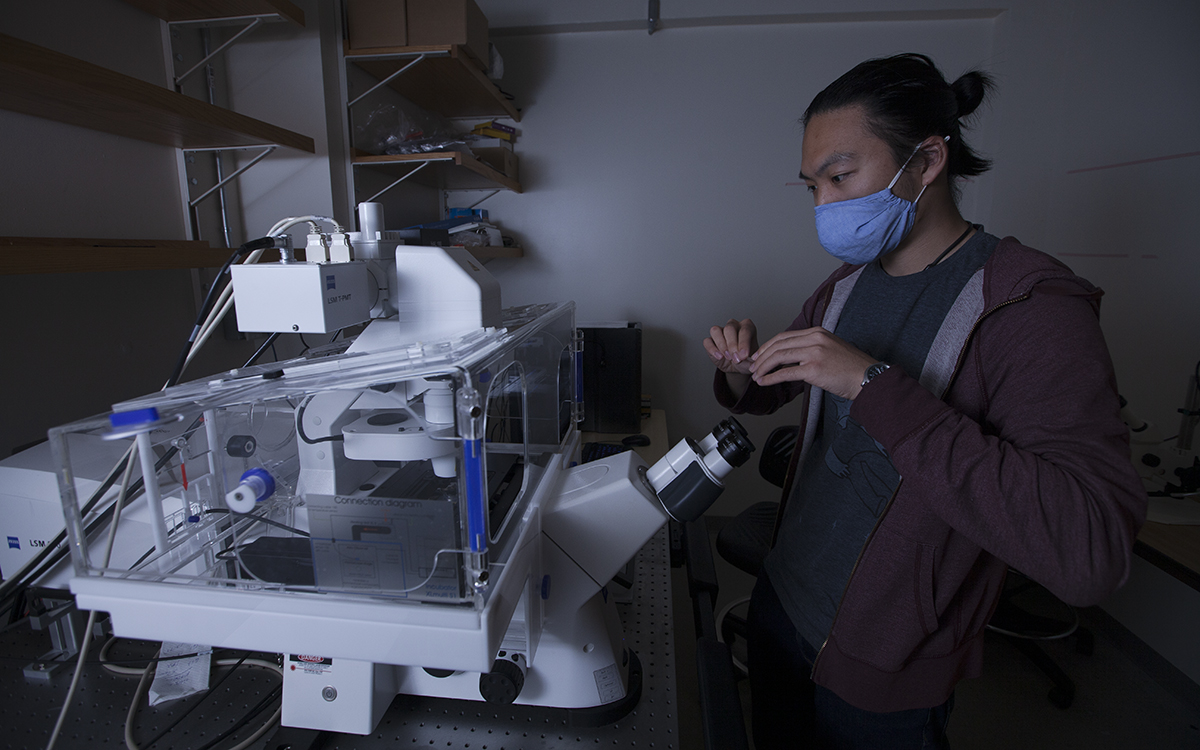 Student Jonathan Tang prepares to insert a slide in the confocal microscope in the “Imaging for Biological Research” course. Credit: Daniel Cojanu
Student Jonathan Tang prepares to insert a slide in the confocal microscope in the “Imaging for Biological Research” course. Credit: Daniel CojanuA Lot to See
“Imaging for Biological Research” is a new course developed by MBL Director Nipam Patel and co-taught by Louis Kerr and Carsten Wolff of the MBL’s Central Microscopy Facility. Students learn the fundamentals of imaging, then quickly advance to using state-of-the-art microscopes to address biological questions.
Indeed, a few weeks into the course, students can sit comfortably at the controls of a $500,000 confocal microscope in Loeb Laboratory.
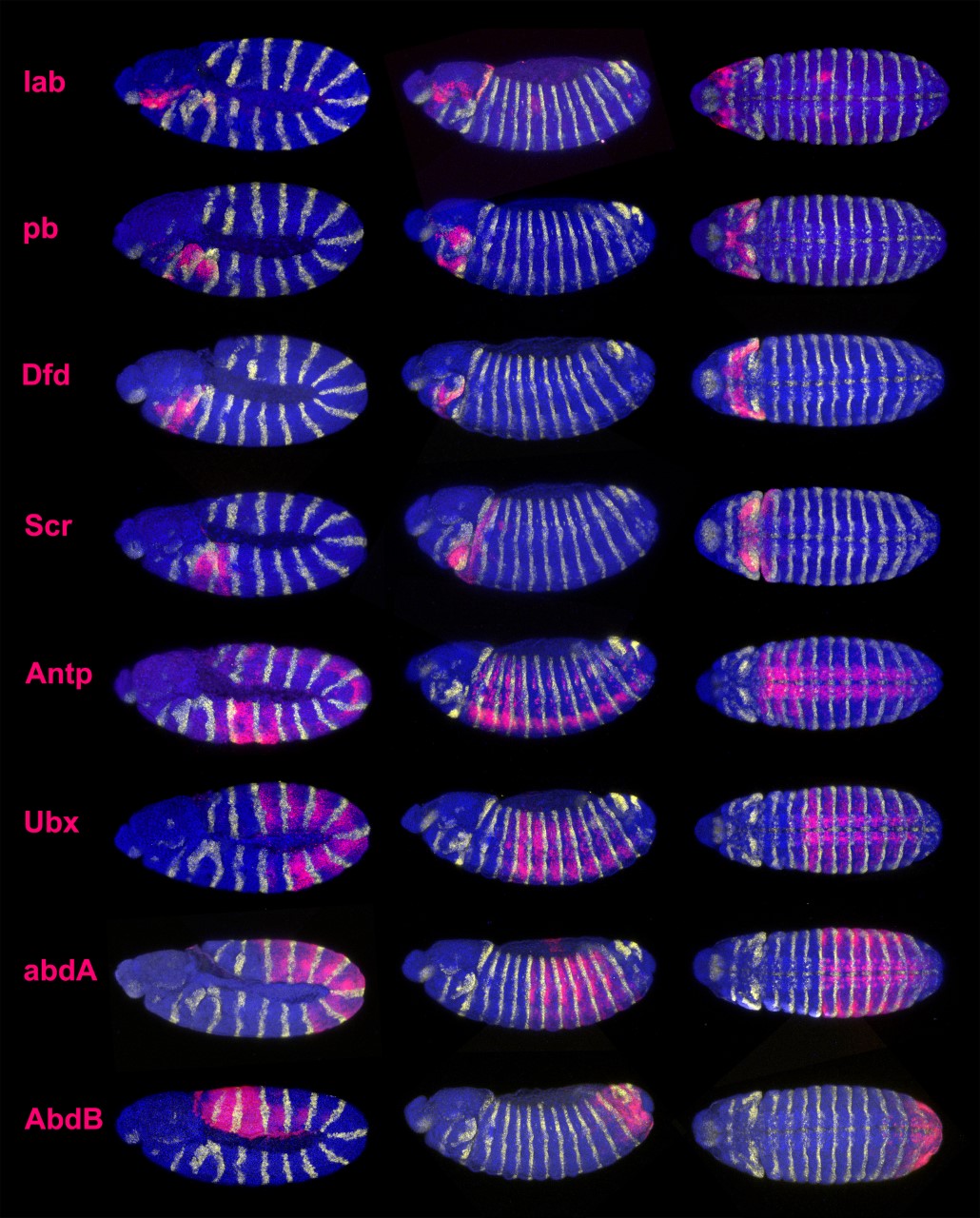 This composite by the Imaging course students shows the expression of 8 Hox genes in Drosophila embryos. Credit: Miranda McKibbin, Michelangelo Neff, Jonathan Tang, and Aster Taylor.
This composite by the Imaging course students shows the expression of 8 Hox genes in Drosophila embryos. Credit: Miranda McKibbin, Michelangelo Neff, Jonathan Tang, and Aster Taylor.“We don’t usually get to use microscopes like this! Dissection microscopes are what you normally find in a lab,” says Jonathan Tang, a biology major, as he works intently to image a glowing fruit-fly embryo.
The four students are learning the careful work of identifying an embryo at a certain stage of development, mounting and orienting it correctly on a slide, and obtaining high-quality, beautiful images using the confocal. As Patel explains, each student is responsible for imaging two of the eight genes called Hox that are expressed along the head-tail axis of the embryo. “These genes have been known for a long time, but they are ideal for teaching students the fundamentals of developmental biology,” he says.
Soon, they will move to imaging other organisms, including zebrafish, butterflies, crustaceans, and skates. And in the last three weeks, they will each have an independent project, guided by one of the faculty.
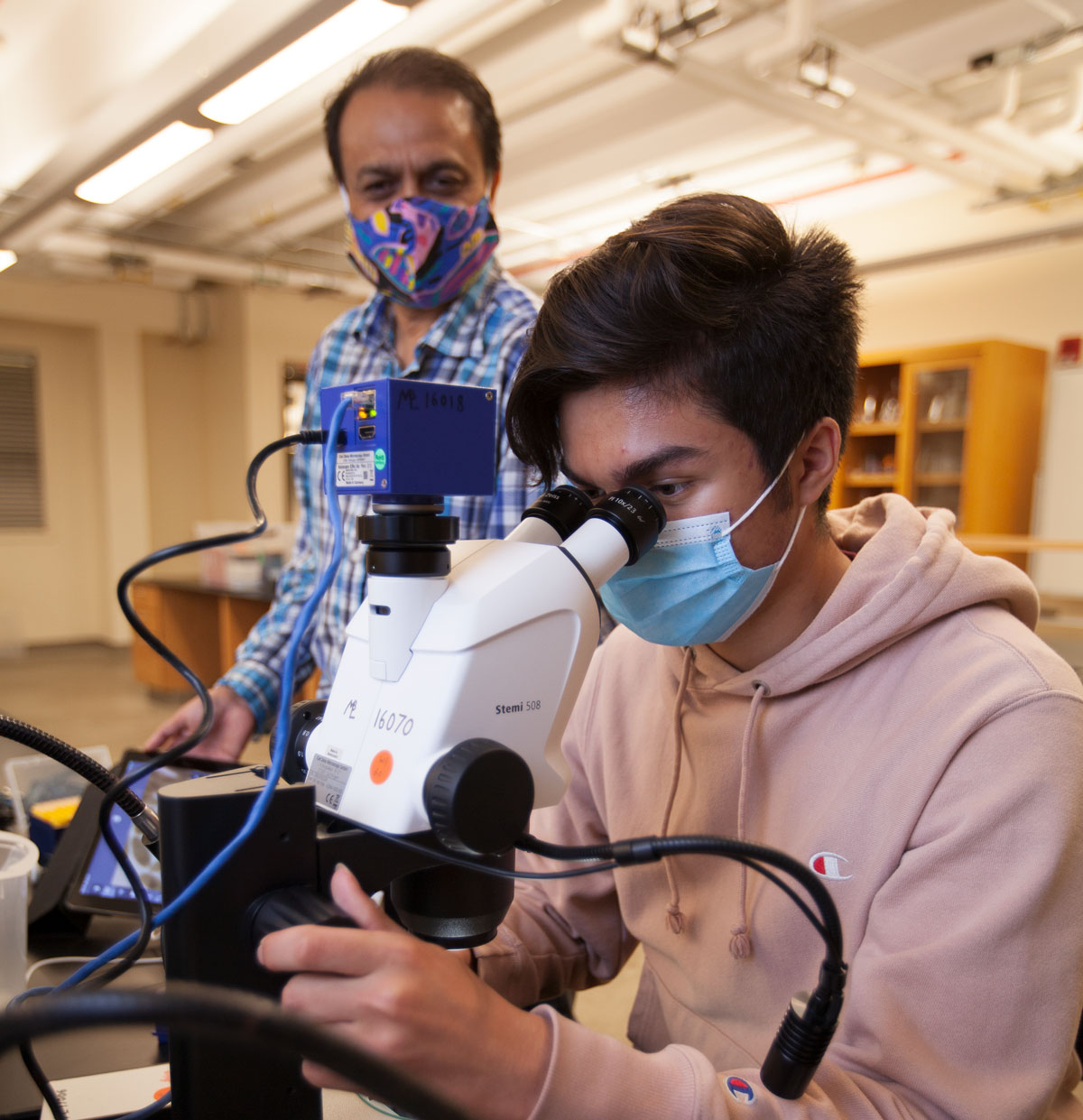 MBL Director Nipam Patel assisting student Michelangelo Neff in the Imaging course. Credit: Daniel Cojanu
MBL Director Nipam Patel assisting student Michelangelo Neff in the Imaging course. Credit: Daniel CojanuOne student will work with Gayani Senevirathne, a postdoctoral course assistant from the University Chicago, to image the Hox genes in zebrafish. Kerr will help a student image butterfly wing scales using electron microscopy. Wolff and a student will look at live cell movements in early crustacean embryos.
And Patel will help the fourth student image all eight Hox genes in a single embryo, which has not been published before.
“It will be really fun to see, and it will also make a great textbook figure,” says Patel, who plans to submit it to a journal. “More importantly, it teaches the students all the methods they need to get a figure like that.”
Live from Woods Hole
The third course in the MBL Autumn Quarter bundle is “Neurons and Glia: A Cellular and Molecular Perspective,” taught by UChicago faculty Bill Green and Robert Carillo. While it is fully online with no lab at present, some of the participants, including Green, are in Woods Hole.
“We added it to the Autumn Quarter to get the ball rolling,” Green says, who hopes to expand MBL-based neuroscience offerings to UChicago students in the coming years. This year, MBL Senior Scientists Joshua Rosenthal and Jennifer Morgan gave special lectures in the course.
Most of the Autumn Quarter students agree that, pandemic or not, Woods Hole is a very nice place to be. “It’s also been awesome to have so many cool researchers around and available to learn from, whether through Zoom guest lectures in class or from other online events. I can’t even imagine what the MBL must be like when there isn’t a pandemic,” says Kimberly “Charlie” Wang, a UChicago biology major. And while the students are busy academically, they have time to stay physically active on bikes provided by the MBL and enjoy a beautiful fall season in Woods Hole.
“Being here has given us a chance to meet new people, have places to explore and do so safely, because there is a nice, small group,” says Megan Garvey. “And we’re not just sitting at home on Zoom!”
—###—
The Marine Biological Laboratory (MBL) is dedicated to scientific discovery – exploring fundamental biology, understanding marine biodiversity and the environment, and informing the human condition through research and education. Founded in Woods Hole, Massachusetts in 1888, the MBL is a private, nonprofit institution and an affiliate of the University of Chicago.
